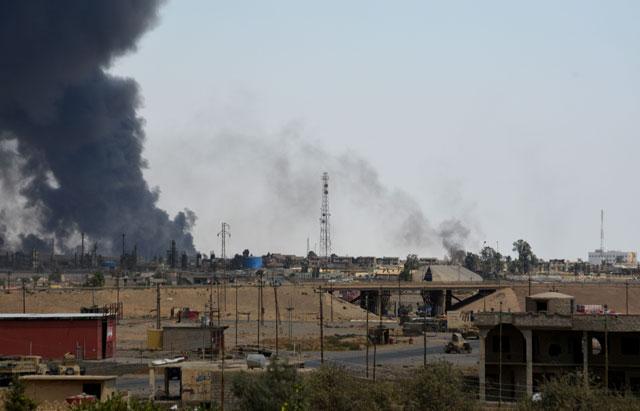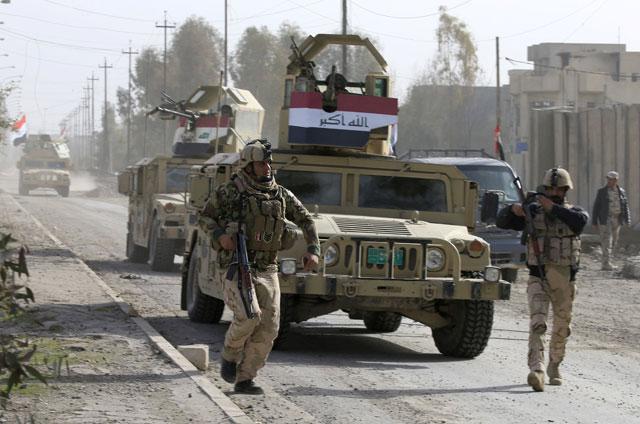You are here
As bodies wash up from the Tigris, some see signs of score-settling
By Reuters - Apr 19,2017 - Last updated at Apr 19,2017
QAYYARAH, Iraq- — Most of the bodies that wash up on the bridge in northern Iraq have their hands bound, eyes blindfolded and a bullet to the back of the head.
The ones that have been dead longest float on the surface, buoyed by the gasses produced as they decompose. Those killed recently tumble in the current that drags them down the Tigris River.
Their identity, and that of their killers, is a mystery.
"Nobody knows," said a mother who has seen more than half a dozen corpses drift past her house overlooking the river near the town of Qayyarah in recent months. "Many more could have gone past in the night."
The Daesh terror group militants were driven out of Qayyarah in August last year. The town is 60km down the Tigris from Mosul, the last major bastion where the militants are still battling against government forces.
Some officials say the floating dead are victims of the militants, who killed hundreds if not thousands of opponents when they ruled the area.
Others, however, say the evidence points elsewhere: towards extra-judicial killings of people accused of having joined the militants, now that the territory is under government control.
“Most of it is score-settling,” said an intelligence officer in Qayyara. That includes the killing of Daesh suspects by elements of the security forces: “There are security agencies that say ‘I won’t bother myself with the investigation’.”
The local police chief, Colonel Fawzi Jameel Sultan, insisted that the bodies were mostly victims of the fighters. Either the corpses had floated down from insurgent-held Mosul, or they had only just been dredged up by spring rain, killed last year when the militants still controlled the area.
But a senior officer in the security apparatus contradicted him. “Not all of them were killed by Daesh,” the officer said.
The bodies could not have floated down from Mosul because there are barriers around 30km south of the city to catch debris, said the officer on condition of anonymity. And some are only one or two months old, killed long after the fighters left.
Once the bodies are identified, it will be easier to discern a motive, he said: “If the [victim] worked for Daesh that means the perpetrators were probably people who were harmed by Daesh.”
Human Rights Watch Iraq researcher Belkis Wille said that if the victims were not killed by Daesh, the description of bound and blindfolded bodies “strongly suggested” they were examples of extrajudicial executions by “state-affiliated forces”, rather than vigilante justice.
‘No mercy’
For those who suffered more than two years of extreme violence and privation under Daesh, no punishment is too severe for people who joined them.
“We don’t want anyone to show them mercy,” said Fawzi Abu Sabri, who lost 13 members of his family to the militants, fantasising aloud about how he would kill a Daesh member if he caught one.
In areas retaken from Daesh south of Mosul, locals have purged traces of their presence, razing or blowing up militants’ homes and even digging up their graves.
Relatives of Daesh members have also been forcibly displaced to camps and harassed by locals who throw grenades at their homes.
Although the militants have been driven out, locals complain that people who cooperated with Daesh remain in the area.
The line between extra-judicial killing by the state and private vigilantism is blurred because many members of the security forces have been personally affected by the militants and wish to avenge the deaths of friends and relatives.
A patchwork of forces, including local and federal police, several intelligence agencies and more than three dozen government-backed Sunni tribal militia, makes it more difficult to determine who might be responsible.
The mystery is most acute for the relatives of those who go missing.
Qais Younis Ilyas’ mother has been searching for him since he was detained by Iraqi security forces several months ago.
Sitting near the river, she holds a photograph taken on the 22 year-old’s wedding day, and a document declaring him innocent signed by local officials and members of the security apparatus.
“Nobody gives us any information. Is he dead? Is he alive?”
Related Articles
QAYYARAH, Iraq — Iraqi forces on Thursday pushed the Daesh terror group from Qayyarah, a northern town considered strategic for any future o
QAYYARAH, Iraq- The stench hits you long before you reach the morgue where the latest casualties of war between the Daesh terror group milit
ERBIL /BAGHDAD — Iraqi forces pushed Daesh militants back further in Mosul on Tuesday in a renewed effort to seize the northern city and dea


















